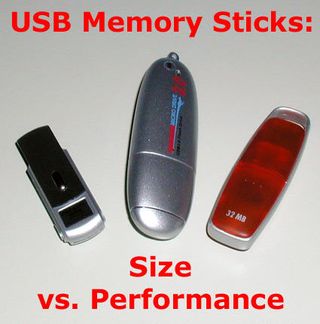Hop To It: Kanguru Micro Drive With USB 2.0
Small Or Quick: Take Your Pick

For some time now, USB flash drives have been bringing the "quickie" to the office - here, we're merely talking about the recurrent need to transfer important data to a medium with maximum flexibility.
The areas of use are many and varied. In these days of wide-spread wired and wireless networks, and of the enormous proliferation of CD burners, the need to copy data in other ways has diminished in importance. But you can't always judge by appearances, because when the going gets tough, the darned technology may give up the ghost - much to the annoyance of those in its clutches. In cases like these, a Flash drive, which is easy to connect to the USB port on just about any computer, may be the long-awaited lifeline.
In fact, if only by virtue of their sheer size (or, rather, their lack of size), flash drives have the power to inspire. In comparison, CDs are almost unwieldy. The USB drive, meanwhile, can disappear in a jacket or pants pocket. With capacities of up to 1 GB, even the largest presentations, slide shows or database images can fit on one.
In addition capacity, the question of the right interface also needs to be addressed. Because a connection is practically always made via the USB port, more and more models are coming on the market that meet the USB 2.0 standard. In theory, that now gives us a transfer rate of 480 Mbit/s instead of 12 Mbit/s. This article explains what sort of transfer performance you can expect in practice.
Stay on the Cutting Edge
Join the experts who read Tom's Hardware for the inside track on enthusiast PC tech news — and have for over 25 years. We'll send breaking news and in-depth reviews of CPUs, GPUs, AI, maker hardware and more straight to your inbox.
Current page: Small Or Quick: Take Your Pick
Next Page A Veritable Sea Of USB Flash DrivesMost Popular

